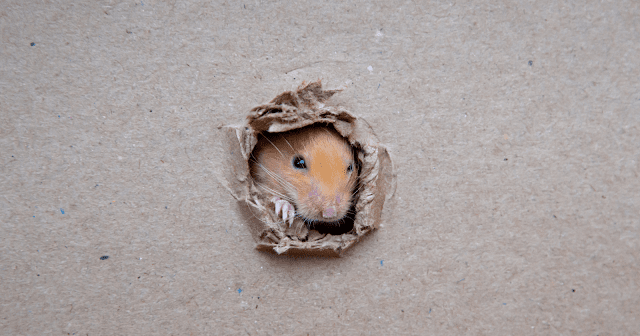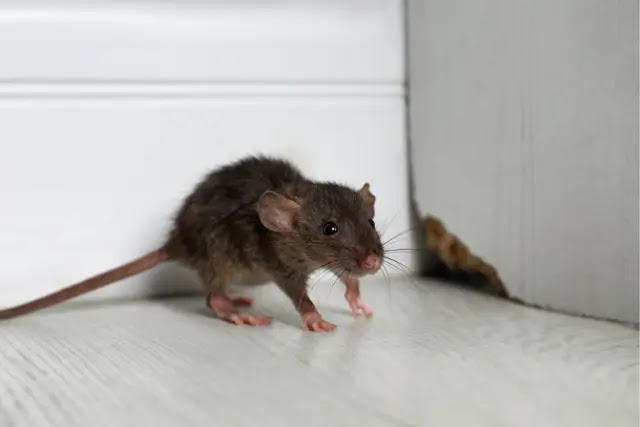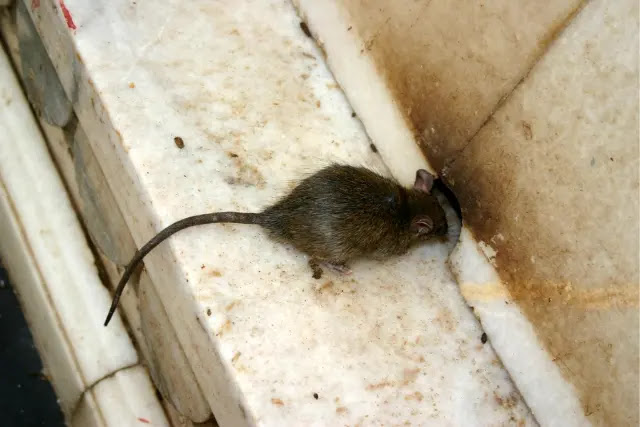It is incredible to think that one of the largest rodents on Earth has a striking ability to squeeze its entire body through tiny holes. Rats are famously determined creatures, and their incredible flexibility and physical strength allow them to slip through even the smallest spaces. Their small size means they can fit into incredibly tight spots, often leaving homeowners wondering how rats were able to gain access in the first place! This remarkable ability has been the source of amazement for centuries, and it's yet another impressive talent that we have come to expect from these pesky little creatures.
In this article, we will explore just how small of a hole a rat can squeeze through, and some of the more remarkable examples.
{tocify} $title={Table of Contents}
Anatomy and Physical Adaptations of Rats
Rats are experts at maneuvering through small spaces, and it’s no surprise when one considers their physical characteristics. Rats have flexible bodies that help them contort in tight spaces. Their soft skeletons, combined with a collapsible ribcage mean that they can compress almost flat and squeeze through holes smaller than two centimeters, about the size of a dime! Not to mention their thin legs which further aid navigation in narrow places.
Other animals have similar adaptations as rats do for squeezing into tiny openings. Deer mice may be able to get around obstacles just half an inch wide due to the lightweight and highly flexible skulls that enable them to move easily by pushing against walls or floors as they walk through tight spots. Even lizards such as geckos and skinks can squeeze themselves under gateways only three-sixteenths of an inch tall thanks to specialized muscles along their backsides that allow them fine control over when certain parts of the body contract during movement.
It's amazing how adaptive and clever rats are! They have evolved to fit through small openings, such as door thresholds and skirting gaps. Even if you take a look at their skeleton, you'll see they almost resemble those of an eel or ferret – long cylindrical shapes with flexible backs, pointed heads, narrow shoulders, and collapsible legs. This shape allows them to snugly squeeze into tight spaces!
Despite popular belief, rats don’t collapse like a slinky coil. Their ribs are there for protection and enable breathing muscles, so this sort of maneuver goes against what their bones were meant to do. The skeleton was designed to fit and move according to the rat's head. Plus, the whiskers and long hairs on a rat’s head can sense if the space it is going into is too small within milliseconds – allowing them to make an informed decision instantly about whether or not it can fit through that hole.
Although some other animal species share these adaptive features with rats, none come close to matching the dexterity found in rodents regarding navigating confined areas skillfully while still maintaining proper breathing techniques!
Surprising Examples of Rat Squeezing Feats
Rats are incredibly nimble creatures with the ability to navigate even the tiniest of spaces. In reality, these rodents can squeeze almost any place if it allows for just an inch or two in diameter; this capability has been documented in countless cases around the world. One particularly notable incident happened when a rat was found inside a cash machine at a bank!
The opening through which the rat entered was measured at 1/2" in diameter, an almost impossible size for such a large animal to pass through. But somehow it managed to squeeze its way inside, leaving behind evidence of disturbed wiring and its droppings. This goes to show that wherever there's a small gap or hole, rats can likely find their way in!
In addition, rats have been known to climb up trees and can even follow below-ground utility pipes from house foundations to roofs! It is reported by some pest professionals that they’ve seen these critters come out unscathed on the other side despite squeezing into aggressively tight places—just as unimaginable as what we saw concerning the cash machine escapade.
Despite how shocking their extraordinary capabilities may seem, it makes perfect sense; nature has enabled them with slender bodies allowing maximum flexibility when negotiating through hard-to-reach spaces - even ones nearly half of their body size! Undeniably intelligent creatures, you have to respect their physical prowess and top-notch maneuvering skills!
Factors that Influence Rat Squeezing Abilities
While exact measurements depend on the size and age of an individual rodent, some species have been known to squirm their way through gaps as small as one centimeter (~0.4 inches) in diameter. Over millennia, rats have developed physical and behavioral adaptations that enable them to scuttle into very tight areas, allowing them to survive in a wide range of environments across the globe.
Size plays a significant role in determining how well adapted a rat is for squeezing into narrow spaces due to its direct effect on passageway widths they can attempt to transverse successfully. Young rats generally tend not only to be smaller; they must also cope with proportionally bigger skulls than their adult counterparts, thus making it difficult for baby rodents to fit through even relatively wider holes. As juveniles grow larger relative skull sizes become closer to those found among older individuals. Fully grown adults boast more advanced head-shaping which aids dexterity when navigating sinuous corridors.
Besides size, agility, and determination also come into play when attempting to traverse such small openings. Rats are known for their energy when circumventing obstacles. They can quickly change position as needed, wriggling and contorting their bodies to make the most effective use of every available crack. This movement is complemented by very powerful hind legs that enable them to kick off from surfaces with great force, thereby helping propel or ‘pop’ themselves through thin gaps where momentum might otherwise be difficult to generate.
In evolutionary terms, the perks of being able to squeeze through tight passages are numerous. Being able to escape predators by scurrying into enclosed spaces allows rats to better survive in hazardous situations while utilizing the same technique when seeking out new food sources giving them greater fitness advantages in the long run. Considering these apparent benefits, it is no wonder why this particular behavior has been developed and honed throughout countless generations.
Implications and Consequences
On average, rats can fit through an opening as narrow as half an inch – which is even smaller than a standard pencil! This capability allows them to enter spaces and buildings that humans would think are well-protected and off-limits. This presents a major problem for homeowners, businesses, and pest control professionals as rats are known carriers of various diseases including Hantavirus Pulmonary Syndrome, Salmonellosis, Leptospirosis, endemic typhus fever, plague, etc. A rat infestation in any space may put occupants at risk of contracting a lifelong illness or worse.
Furthermore, rats are extremely destructive and can be costly to control. In their search for food, rats will chew through any material such as wood, fabric, and even aluminum. They leave behind droppings that may contain parasites like fleas or mites that create other health risks. Rats also often destroy insulation within walls to nest and cause electrical shorts if they gnaw on wire coatings.
Fortunately, there are steps homeowners and businesses can take to effectively rodent-proof their premises. The primary strategy is closing off potential points of entry such as tiny cracks in foundations or vents leading from the outside with materials like sheet metal, screen mesh, foam sealers, etc. It is also important to eliminate the sources of food for rodents by keeping areas clean of crumbs, pet food dishes, grease traps, etc. Last but not least baiting programs should be implemented using quality rat poison products approved by the Environmental Protection Agency (EPA).
Overall people must understand how small a hole a rat can fit through to protect buildings from becoming infested with these pests– which carry diseases harmful to both humans & pets alike –and minimize the destruction caused by them.
Conclusion
Rats are well known for their incredible squeezing abilities, and this article has highlighted some of the unbelievable feats that prove just how small of a space they can get through. Even spaces as small as 1 cm (1/3 inch) in diameter are not off-limits to rats! This astonishing ability should not be underestimated. To effectively prevent and control rat infestations, it is essential to understand how rats access buildings in the first place and to use strategies that address these vulnerabilities. A little bit of prevention goes a long way - so don't let rats take advantage of your home's weak points!



